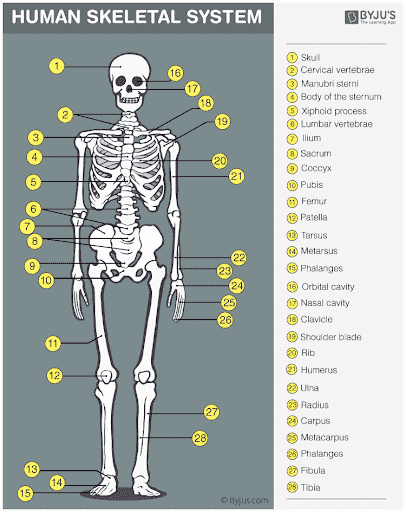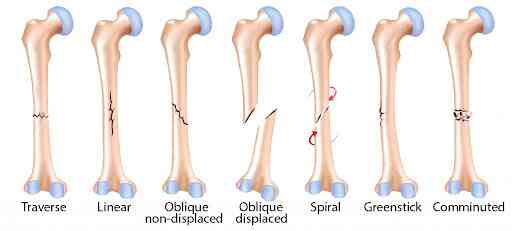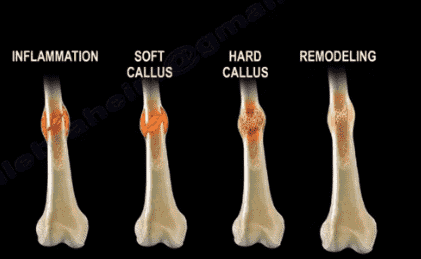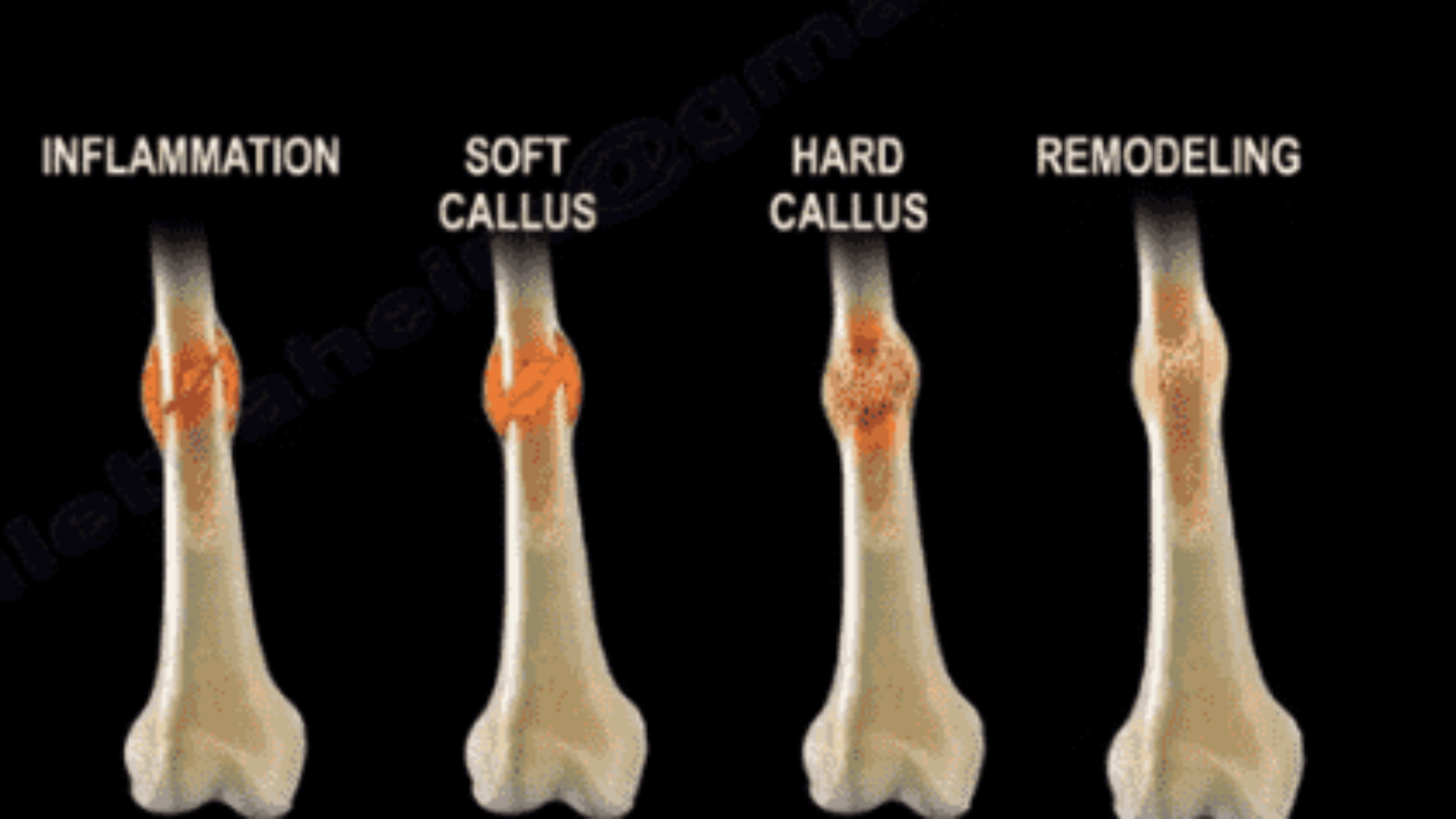
What Are Bones?
Bones are the living tissue that contribute to the body’s skeletal system. The human body consists of 206 different bones, each with its own purpose. These bones vary in size and in shape, but are ultimately what make up the structure of the human body. Bones are an essential element in supporting and sustaining life, as they help protect internal organs, tissues, and muscles. Now what happens when we break a bone? How do we heal?
Fig. 1. Illustration of the largest and most important bones in the skeletal system.

How Do Bones Break?
Breaking a bone can happen to anyone, of any age, and is a very common injury. Over six million people in the U.S. break a bone each year.[1] Breaking a bone usually requires a strong amount of force that is too much for the bone to handle. This can come from high-impact collisions, awkward falls, or any other forms of major trauma. When a bone breaks, a person will usually experience an onset of painful symptoms. This may include swelling, bruising, bleeding, numbness, and tingling. [2] Some bone breaks are more noticeable than others because they may indicate a visible deformity, or protrude out of the skin.

Fig. 2. Illustration of the types of fractures [3]
There are many types and forms of broken bones, but doctors and surgeons follow four general classifications to determine severity and treatment.
Displaced – Displaced fractures mean the bone has broken in two or more pieces, and has moved out of alignment. A visible deformity may be present.
Non-Displaced – The bone has broken, but has not moved out of alignment (no deformity).
Closed – The fracture may be displaced or non-displaced, but it does not break through the skin.
Open – This fracture is usually the most serious, as it breaks through the skin.
How Do We Heal?
Generally, broken bones will heal incredibly well if there is sufficient treatment. The process in which the bones heal is divided into four different phases. This includes the inflammatory stage, granulation tissue formation, bony callus formation, and lastly bone remodeling.
Fig. 3. Illustration of bone healing stages [4]

The inflammatory stage occurs once the bone is broken/fractured. Blood flow to the bone and periosteum (the layer around the bone) is disturbed, resulting in blood to clot and stop excessive bleeding. This is the stage in which someone may notice swelling, redness, and pain. During this stage, many immune cells (lymphocytes, neutrophils, macrophages) gather around the broken bone and help initiate the healing process.
The granulation tissue formation occurs within two weeks of the injury. Special cells known as chondroblasts help produce cartilage around the fracture site. This acts as a framework/scaffold for the new bone to grow.
Once there is adequate cartilage formation in the fracture area, the body then enters the bony callus formation stage. Osteoblasts are the bone-building cells, and they help with creating new bone tissue. Over time, they create a bony callus and help stabilize/harden the fracture area.
By the time the bony callus formation ends, the bone is almost 100% healed. The final stage is the bone remodeling phase. This phase allows the bone to undergo a process in which it is reshaped and remodeled. Osteoclast cells help break down any excess bone that was produced during recovery, while osteoblast cells continue on gradually restoring the bone to its original shape and strength.
As technology continues to advance and new treatment methods arise, the overall healing time of fractures has improved. Physiotherapy helps with gaining strength and full range of motion, while surgical methods have been proven to help with more serious fractures. Recovery from broken bones can take time, so it’s imperative that the proper doctors are consulted and an appropriate treatment plan is created and followed.
Sources:
[1] https://u.osu.edu/productdesigngroup3/sample-page/#:~:text=Approximately%206.3%20million%20fractures%20occur%20each%20year%20in%20the%20U.S.&text=Fractures%20occur%20at%20an%20annual,women%20(2.0%20per%20100).&text=After%20age%2045%2C%20however%2C%20fracture%20rates%20become%20higher%20among%20women


Very nice post. I absolutely appreciate this site. Thanks!